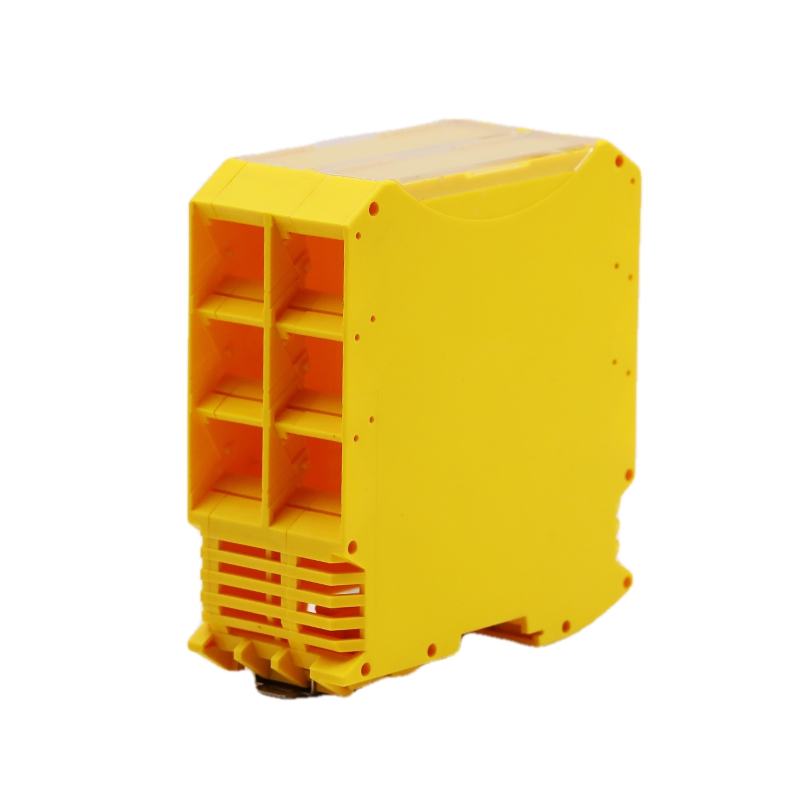DIN Rail Module Enclosure: Protecting and Streamlining PCB Terminal Blocks
2023-10-17
Introduction
In the world of electrical and electronic engineering, efficiency and safety are paramount. DIN Rail Module Enclosures designed for PCB terminal blocks have emerged as indispensable components, ensuring the protection and organization of electronic connections. These enclosures offer a secure and organized environment for printed circuit boards (PCBs) and terminal blocks, contributing to streamlined installations and enhanced electrical system reliability. In this blog, we will delve into the features, benefits, and applications of DIN Rail Module Enclosures for PCB terminal blocks.
Understanding DIN Rail Module Enclosures
DIN Rail Module Enclosures are purpose-built housing units designed to accommodate printed circuit boards (PCBs) and terminal blocks within a standardized and modular framework. These enclosures are mounted on DIN rails, which are widely used in industrial, commercial, and residential settings for the organization and secure installation of electrical components.
Key Features of DIN Rail Module Enclosures for PCB Terminal Blocks
1. Modular Design: DIN Rail Module Enclosures are typically modular, allowing users to customize the enclosure to fit specific PCB and terminal block requirements. This adaptability simplifies the installation process.
2. Protection: Enclosures offer protection against dust, moisture, physical damage, and electromagnetic interference, ensuring the longevity and reliability of electronic components.
3. Easy Access: Many enclosures feature hinged or removable covers, allowing convenient access to PCBs and terminal blocks for maintenance and troubleshooting without the need for disassembly.
4. Labeling: Enclosures often include space for labeling and marking, helping users identify circuits, components, or functions easily.
5. Grounding: Proper grounding and shielding options are available in some enclosures to mitigate electromagnetic interference and maintain signal integrity.
6. Ventilation: Ventilation options can be included to dissipate heat generated by electronic components, preventing overheating and ensuring optimal performance.
7. Locking Mechanisms: Secure locking mechanisms are often incorporated to prevent unauthorized access and tampering with electrical connections.
Benefits and Applications
DIN Rail Module Enclosures for PCB terminal blocks offer several advantages and find applications across diverse industries:
1. Industrial Automation: In factory automation, these enclosures are used to house control systems, PLCs (Programmable Logic Controllers), and terminal blocks, ensuring reliable operation even in harsh industrial environments.
2. Power Distribution: In electrical distribution and power management systems, enclosures simplify wiring and organization, facilitating safe and efficient power distribution.
3. Renewable Energy: In solar inverters and wind turbine control systems, DIN Rail Module Enclosures house PCBs and terminal blocks, safeguarding critical connections in renewable energy installations.
4. Building Automation: In building management systems, these enclosures are utilized for controlling HVAC (Heating, Ventilation, and Air Conditioning), lighting, and security systems.
5. Data Centers: Enclosures are employed in data center infrastructure to house networking and communication equipment, ensuring efficient data flow and minimal downtime.
6. Transportation: In the automotive and railway industries, DIN Rail Module Enclosures contribute to the reliable operation of onboard control systems and terminal blocks.
Conclusion
DIN Rail Module Enclosures for PCB terminal blocks are not mere protective housings; they are essential components that streamline installations, enhance safety, and contribute to the reliability of electrical and electronic systems. Their modular design, protection features, and adaptability make them indispensable in various industries, from industrial automation to renewable energy. As technology continues to advance, these enclosures will remain integral to the efficient and organized management of electronic connections, supporting the evolving needs of electrical and electronic systems.



